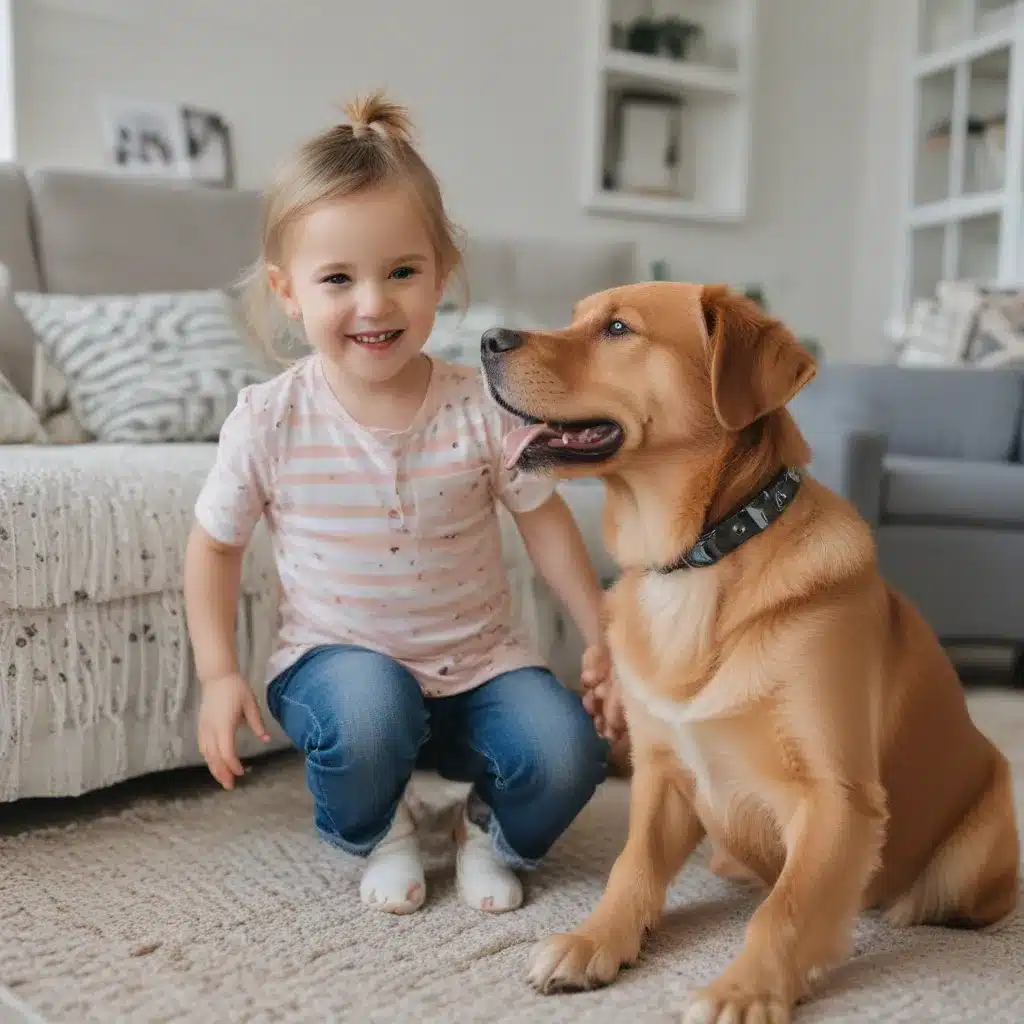
Creating a Harmonious Home: Balancing Dogs and Children
As a proud dog parent and a mother of two young kids, I know firsthand the joys and challenges of navigating the world of mixed households. While our furry friends can bring an unparalleled level of joy and companionship, introducing them to the bustling world of children can sometimes feel like a delicate dance.
But fear not, my fellow dog-loving parents! I’m here to share my hard-earned insights and practical tips to help you create a harmonious, kid-friendly home for your canine companions.
Preparing Your Pup: Training and Socialization
The key to a successful dog-child dynamic starts long before the doorbell rings. As responsible pet owners, we must invest time and effort into training our four-legged friends, instilling the necessary skills and behaviors to thrive in a child-filled environment.
Begin by teaching your dog fundamental commands like “sit,” “stay,” and “leave it.” These basics will come in handy when little hands start reaching for your pup’s toys or treats. Additionally, consider desensitizing your dog to the sound of the doorbell and the presence of unfamiliar people, so they don’t become overly excited or anxious when guests arrive.
Socialization is another critical aspect of preparing your dog for child interactions. Expose your furry friend to positive experiences with children of all ages, starting from a young age. This will help them become more comfortable and confident around little ones, reducing the likelihood of undesirable behaviors like jumping, nipping, or excessive barking.
Establishing Boundaries and Management Strategies
Once your dog is well-trained and socialized, it’s time to set the stage for a successful interaction. Before your guests arrive, decide on the ground rules and management strategies that will keep both your dog and the children safe and comfortable.
Will your dog be confined to a specific room or area during the visit? Will they be allowed to roam freely, but under close supervision? Communicate these expectations clearly to your guests, so everyone is on the same page.
Utilize management tools like crates, baby gates, or designated resting areas to create a safe and structured environment. This not only protects your guests but also provides your dog with a comfortable retreat when they need a break from the excitement.
Navigating the Arrival and Interaction
As the doorbell rings and the eager little faces appear, it’s showtime! Take a deep breath and remember your training and management plan. Greet your guests warmly, and then turn your attention to your dog.
Gently guide your pup to their designated area or have them perform a “sit-stay” near the entrance. Reward them with praise and treats for their calm and polite behavior. This sets the tone for a positive interaction and helps your dog understand that good things happen when they’re well-behaved.
Actively Supervising and Intervening
Throughout the visit, maintain a close eye on the interactions between your dog and the children. Be ready to intervene if necessary, gently redirecting or removing your pup from any situation that could become overwhelming or unsafe.
Teach your kids how to approach and interact with your dog respectfully, reinforcing the importance of gentle touches, calm movements, and respecting the dog’s personal space. Encourage the children to ask for permission before petting or playing with your furry friend.
Recognizing Stress Signals and Providing Breaks
Not every dog will thrive in a high-energy, child-filled environment. Keep a close eye on your pup’s body language and behavior for signs of stress or discomfort, such as yawning, lip-licking, or attempts to avoid the children.
If your dog appears overwhelmed, don’t hesitate to provide them with a peaceful retreat. Escort them to their designated safe space, offer a favorite chew toy or puzzle, and give them time to decompress. Remember, your dog’s well-being is just as important as your guests’ comfort.
Fostering Positive Associations
Ultimately, the goal is to create lasting positive memories and associations between your dog and the children in your life. Praise and reward your pup when they exhibit calm, friendly behavior, and encourage the kids to offer treats and affection when appropriate.
By setting your dog up for success and teaching your children how to respectfully interact, you’ll lay the foundation for a beautiful, lifelong bond. Who knows, your dog might even become the star of your next family gathering!
So, there you have it, fellow dog lovers – the secrets to creating a kid-friendly oasis for your canine companions. With a little preparation, some management strategies, and a whole lot of patience, you’ll be well on your way to navigating the joys and challenges of mixed-species households. Happy tails to you and your furry family!

